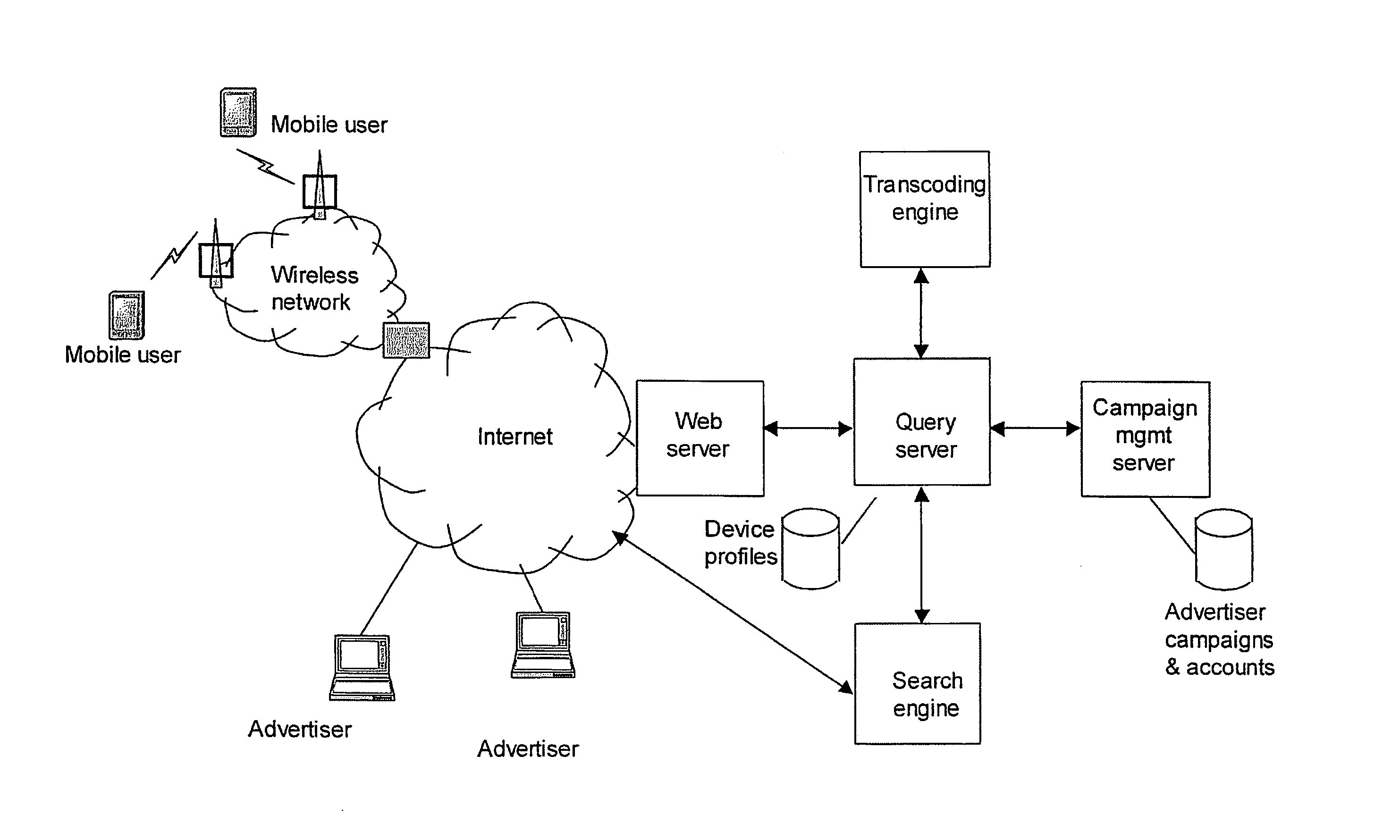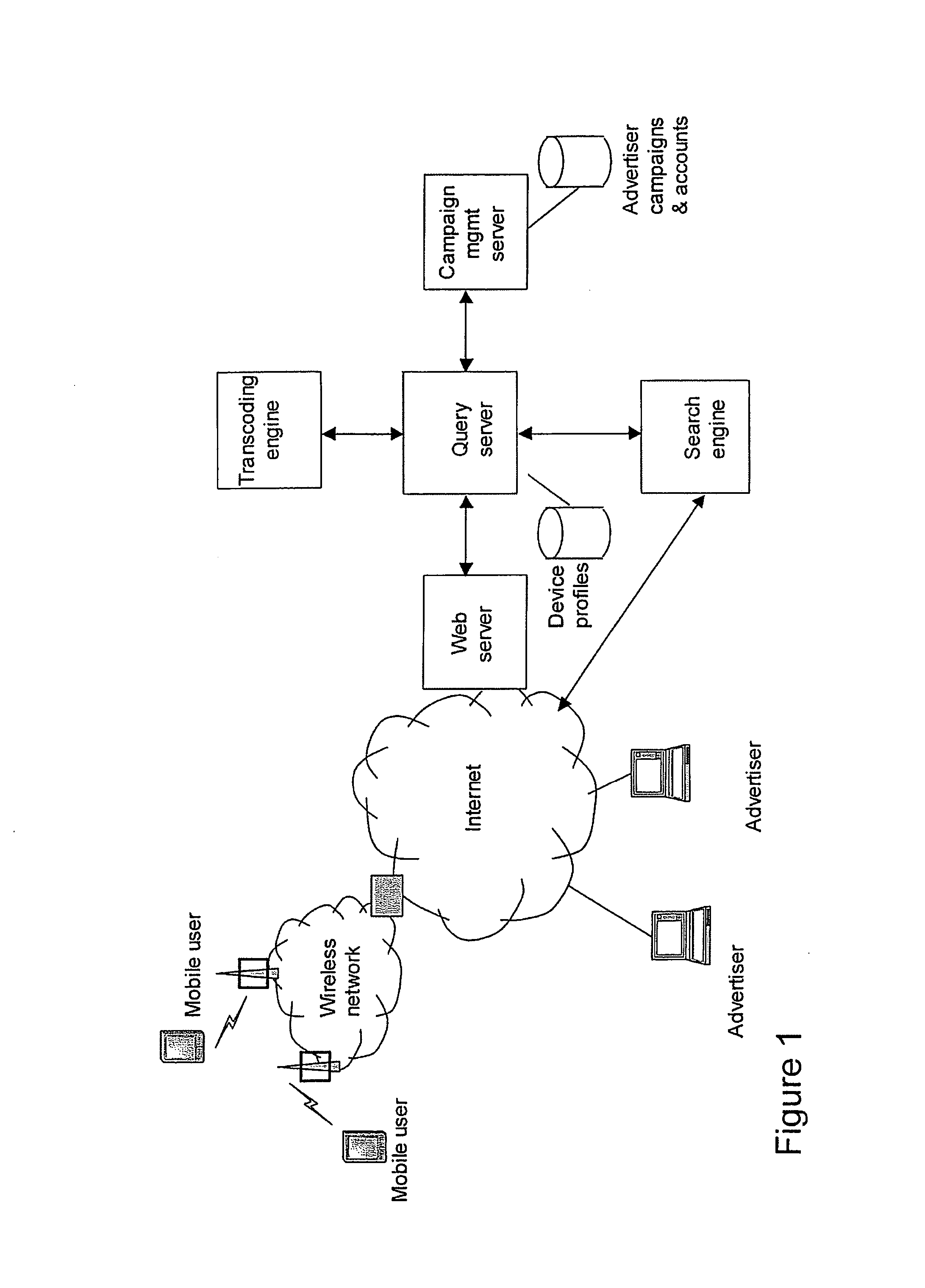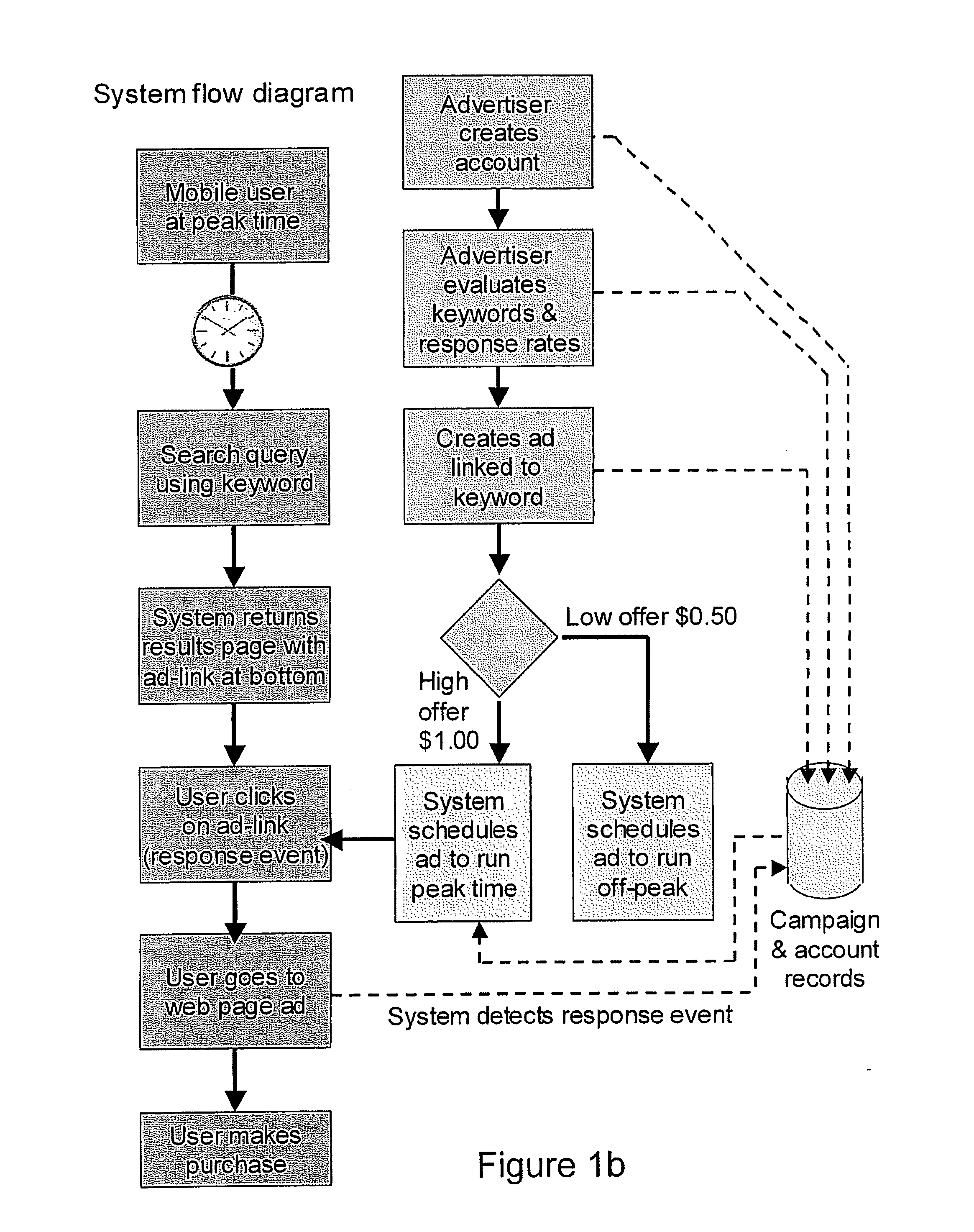[0013] A further complicating factor is that it is generally desirable to be able to provide an advertiser with a budget which will not be exceeded even though a charge is based upon response rate. Thus in embodiments although there is, in effect, a bidding process based upon forecast response rate, there is also an allocation mechanism to allocate one or more sponsored links of a winning advertiser for display at times of peak predicted response rates. It will be appreciated from the foregoing discussion that in embodiments the benefit of an advertiser paying a higher price for a sponsored link is a faster clearing rate and therefore a greater chance of the
target response level (budget) being hit but not exceeded. Embodiments of the method may also incorporate a limiting mechanism, where this is thought desirable, to
restrict a single advertiser from dominating at one or more times of peak predicted response rate.
[0021] Preferably an advertiser interface further provides a mechanism for an advertiser to input a budget value defining an upper limit of
payment by the advertiser over a defined time period (such as a day, week, month or the like) which may be termed a “campaign”. The serving of sponsored links (which may be termed “impressions”), is then preferably responsive to this budget value, in order to limit the sponsored links served (in response to searches including the one or more keywords) in order that the advertiser's budget value is not exceeded. The determination of whether or not the budget value is to be exceeded may comprise recording an actual number of responses (and multiplying by the advertiser's
payment by response), but in other embodiments sufficiently accurate value may be determined from the forecast response rate for a sponsored link, and hence predicted in advance. This allows embodiments of the
system to pre-allocate the serving of sponsored links amongst advertisers, by time, which can be advantageous. Optionally, as mentioned, an anti-lock out feature may be implemented, for example by limiting a maximum budget value for an advertiser.
[0035] As mentioned above, the packaging optionally comprises defining a plurality of screenviews for displaying the collection of search results, each screenview comprising a substantially complete screen of displayed data for a
wireless communications device, and formatting the data
package such that when displayed by the
wireless communications device at least one of the screenviews includes the at least one sponsored link. Preferably, however, one sponsored link is provided per screenview. In embodiments a screenview comprises at least one
hyperlink for intra-
package navigating to another of the screenviews of the
package. Thus in embodiments each screenview displays a substantially complete screen of data on the
wireless mobile communications device but, nonetheless, the screenviews are provided as part of a substantially contiguous markup language document within a single package to the
wireless mobile communications device. In other embodiments separate, linked markup language documents or datasets may be provided but nonetheless still within the single package of results data, in order to minimise end-to-end latency effects within the mobile network.
[0036] Optionally the packaging of the collection of search results comprises incorporating into the package content summaries of the search results each for display in an aforementioned screenview. In this way one or more sponsored (for example, advertising) links may be interspersed through a content summary package to “stack” sponsored links. Broadly speaking a content summary package (CSP) as used herein comprises a collection of search result summaries or content summary objects, described in more detail later, which can be downloaded to a
mobile device in one query-response over a mobile network. This facilitates a user inspecting a number, typically five to 10 of candidate search results without having to make additional, time-consuming requests over the mobile network. Thus in embodiments (sponsored) advertising or other links are inserted into the content summary package, typically as a header or footer of each of the screenviews obtained within the package, so that when a user clicks between screenviews the display moves up and down to reveal the various sponsored links. It will be appreciated that this concept may be used together with or independently from the above described sponsored
link time-sharing.
[0041] In preferred embodiments the search service /
server is able to link from the one or more sponsored links in the search results to these hosted pages of mobile-formatted data (advertisement pages). As described above, in some embodiments these pages may be incorporated into content summary packages (i.e., the larger multi-section pages previously described). In the latter the sponsored link may comprise a bookmark link to another location within the content summary package, so as not to need to use the network for another fetch-response cycle, which could impose a further several seconds
delay. Thus, in some preferred embodiments, the package comprises a block of screenviews for displaying advertising collateral (or other material) navigable with intra-package links.
[0042] In embodiments the above described hosting of mobile-formatted pages of data for display of advertising (or other) material may be extended so that the search service /
server is configured to host an advertising site comprising a plurality of pages / packages of data as previously described. Optionally a complete site may be packaged within a data package as previously described, for example using a content summary page format, for rapid intra-package navigation between pages of the advertising site. In embodiments the advertising site is accessed by clicking on a link to a first advertising page, which sends a URL (or other
resource location) request to an advertising (or other) site hosted by the search service.
 Login to View More
Login to View More  Login to View More
Login to View More 


